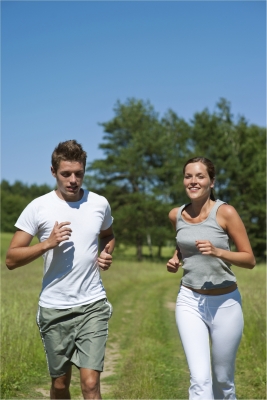Are you someone who strives to look after your body? Is your health something that you truly value? Do you try hard to stay active and fit? So what you can do to continue enjoying the physical activities you engage in and to carry them out safely and effectively. One of the keys to maintaining a healthy exercise routine is to look after your muscles and to prevent injuries. Prevention is always better than cure so take preventative measures to reduce the likelihood of sustaining an injury while engaging in physical activities.
WHY DO SPORTS INJURIES OCCUR:
• Failing to warm up properly
• Stretching at the start rather than at the end of the sport/physical activity
• Incorrect technique
• Returning to sport too soon after a
previous injury, before healing properly
So what can you do in order to prevent injuries?
1. Follow a proper stretching routine
It’s good to stretch prior to going for a power walk/jog/playing a game of basketball, but research has shown that stretching while the muscles are still ‘cold’ will significantly increase your risk of straining a muscle. It is better to warm up prior to exercise. A proper warm up is a low intensity version of the exercise you plan to engage in, e.g. if you plan to go for a jog, a warm up can include a power walk or walking lunges.
Once you complete the exercise/sport you can cool down by lowering the intensity. After a jog, a good cool down will be to finish off with a brisk walk plus some stretches. Make sure that you hold each stretch rather than ‘bounce’. Only go to the first point of stretch, hold for 15-30 seconds; repeat each stretch approximately 3 times.
2. Make sure that your technique is correct
As physiotherapists we frequently see patients with sports injuries which happen as a consequence of incorrect technique. Thus make sure when commencing a new sport or type of exercise you do so under the supervision of a qualified physiotherapist/ fitness instructor.
Most classes are great for fitness but they tend
to be done in large groups so your instructor
will not be able to check every person’s
technique. Try to find a small group class
where possible but if you do choose to attend
a large class, listen to your body and stop if
you feel any pain/discomfort.
3. Get regular massages
While stretching will help to prevent muscle tightness and knots, research has shown that the effects of stretching do not last for very long unless you stretch every day. It is beneficial to get a proper sports massage every 3-4 weeks for preventative measures using a qualified, registered massage therapist.
4. If you do sustain an injury, get proper rehabilitation
This is a most important point. If you love your
sport you may be tempted to take shortcuts
when it comes to rehab and return to the
sporting field too soon. If you return to your
sport/exercise before the injury has fully
healed, you are far more likely to sustain the
same injury again and provoke new ones.
Initial recovery, depending on the severity
of the injury, should involve some elements
of the RICE protocol. The RICE protocol is
typically followed for 48 hours.
There are several treatments that can speed up the recovery process such as ultrasound, electrotherapy, SCENAR Therapy and others.
Once the initial pain and inflammation are under control the focus shifts towards a specific exercise program. This is a crucial step in the recovery purpose. While the treatment methods mentioned above will help to reduce the symptoms, the only way to maintain the results and reduce the risk of sustaining the same injury in the future, is to do specific strengthening and range of motion exercises.
Besides doing exercises which are specific
to the area you injured, make sure that you
work on the whole kinetic chain. E.g. if you
have an old injury in the hip, the weakness
of the hip will exacerbate the problem of
an Achilles tendon strain, as more load
will be going through the ankle. Hence by
strengthening the hip, the additional load
going through the ankle will be reduced.
Thus your exercise program addresses
not only the Achilles tendon but also your
core, hips and knees. One of the best ways
to strengthen your core muscles is to do
Clinical Pilates. So for all of you who love
being fit and active – follow the tips outlined
above and you will reap much benefit from
exercise.

